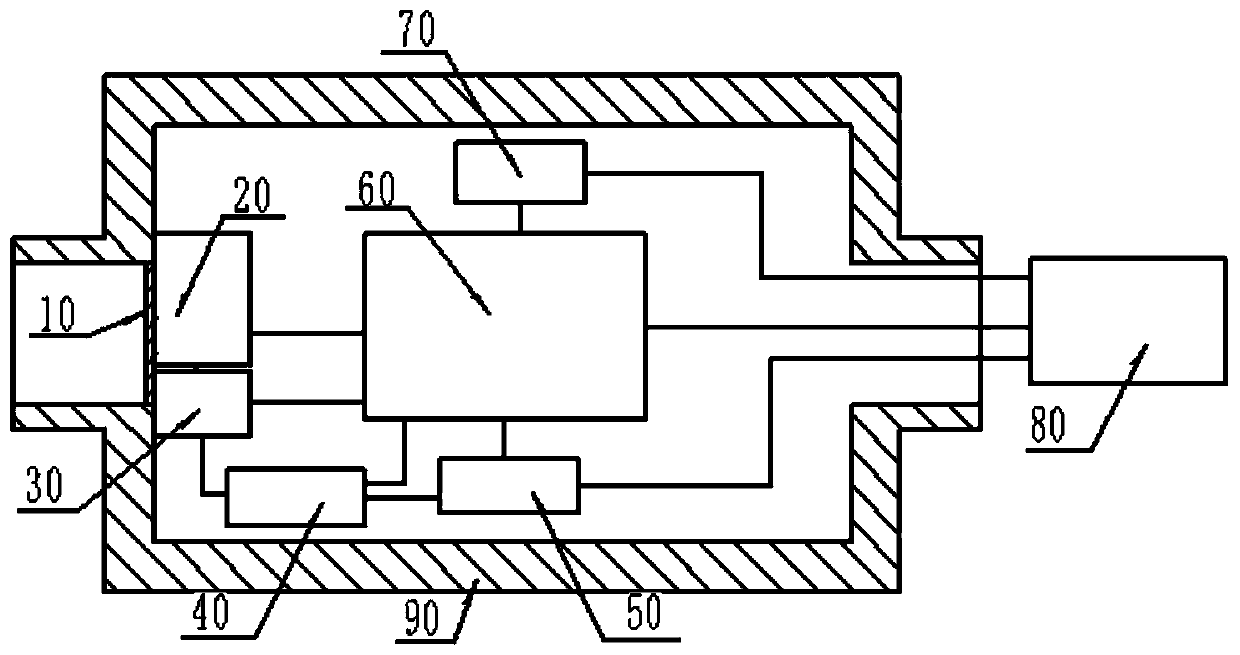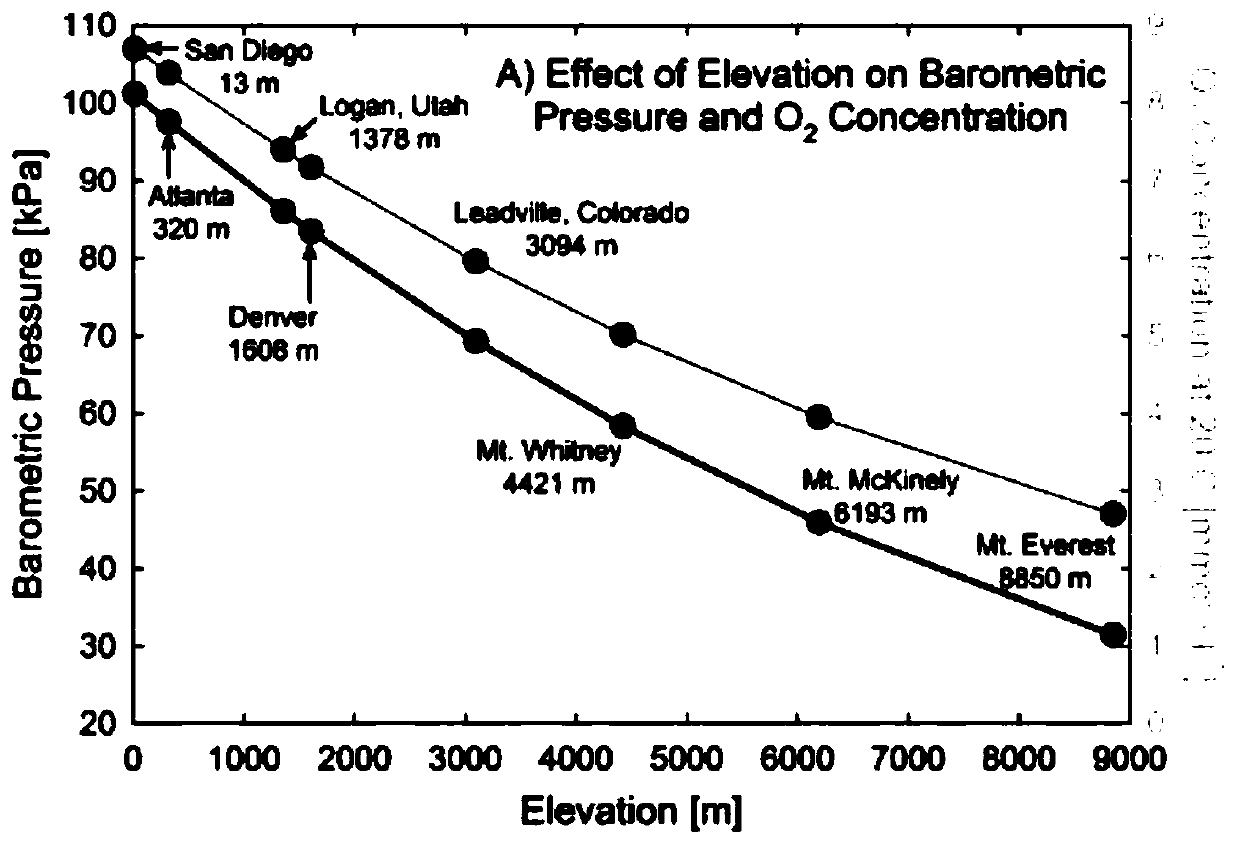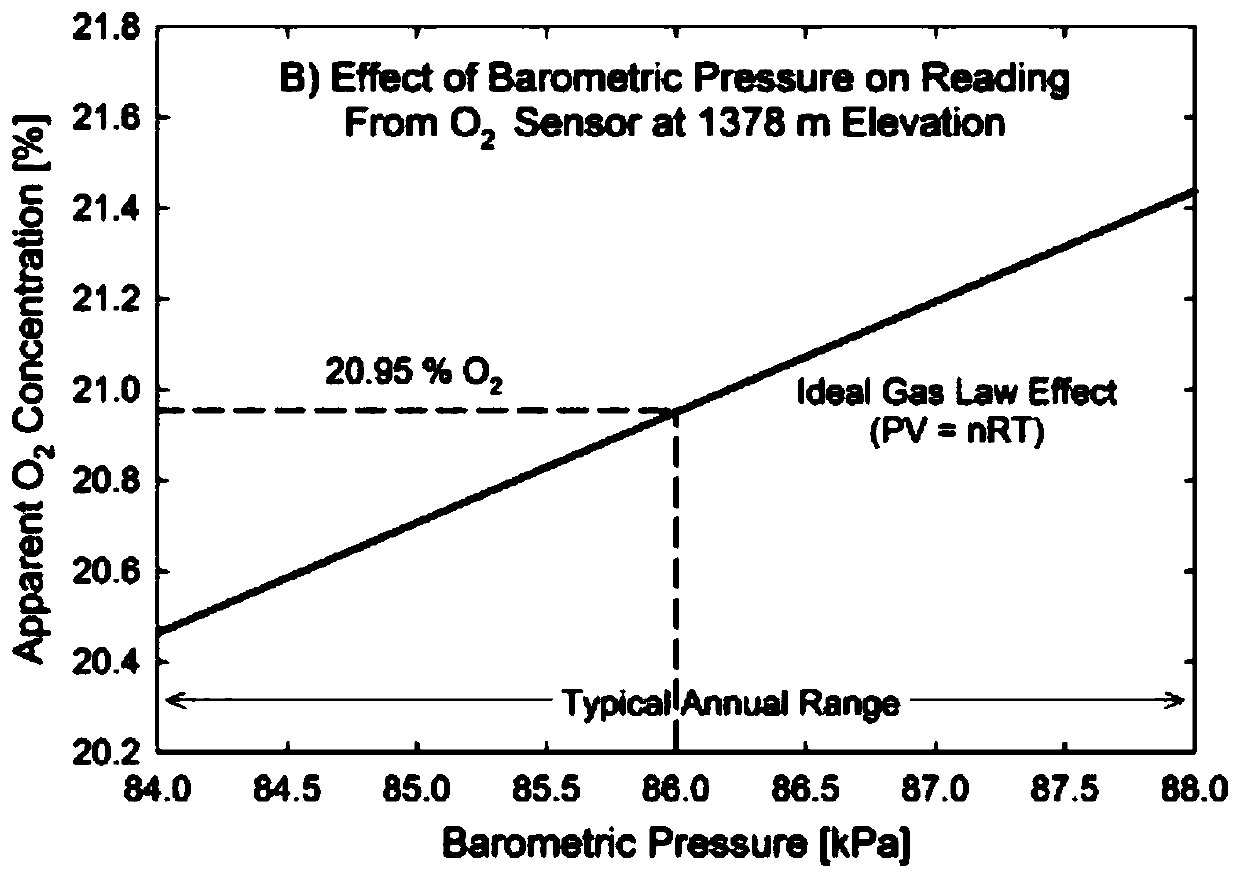Oxygen detector, detection method and application
A detector and oxygen technology, applied in the field of oxygen detectors, can solve problems such as inaccuracy, achieve accurate oxygen concentration value, improve service life, and improve detection accuracy and stability.
- Summary
- Abstract
- Description
- Claims
- Application Information
AI Technical Summary
Problems solved by technology
Method used
Image
Examples
Embodiment 1
[0061] refer to figure 1 As shown, it is a schematic structural diagram of the oxygen detector proposed in this embodiment, including: a sealed casing 90 and an information processing unit 80, and the sealed casing 90 is provided with a heater 20, a first temperature sensor 30, and a control unit 40 ; The second temperature sensor 50, the oxygen sensing element 60 and the air pressure sensor 70. The sealed housing 90 is provided with an air inlet and a wire outlet. The oxygen-permeable membrane 10 is disposed at the air inlet of the sealed housing 90 . The heater 20 is arranged adjacent to the oxygen-permeable membrane 10 to heat the oxygen-permeable membrane 10 .
[0062] The heater 20 is connected with a control unit 40 , and the control unit 40 is connected with the first temperature sensor 30 and the second temperature sensor 50 respectively. The control unit 40 can control the heater 20 to heat by receiving the temperature signals of the first temperature sensor 30 and...
Embodiment 2
[0072] The structure and detection method of the oxygen detector provided in this embodiment are the same as those in Embodiment 1, only the electrolyte formula in the electrochemical device is different.
[0073] The electrolyte formula provided in this embodiment is that the concentration of citric acid is 0.6 mol / L; the concentration of tartaric acid is 0.3 mol / L.
Embodiment 3
[0075] The structure and detection method of the oxygen detector provided in this embodiment are the same as those in Embodiment 1, only the electrolyte formula in the electrochemical device is different.
[0076] The electrolyte formula provided in this embodiment is that the concentration of citric acid is 1 mol / L; the concentration of tartaric acid is 0.5 mol / L.
[0077] After testing, the measured results of the electrolytes of the above three examples are as follows. From the data in the table, it can be known that by improving the composition of the electrolyte, the stability of the device itself has been significantly improved, and the compatibility of tartaric acid and citric acid has improved. While improving the effect, it also avoids the situation that the effect of a single ingredient is negligible.
[0078] Table 1
[0079]
PUM
 Login to View More
Login to View More Abstract
Description
Claims
Application Information
 Login to View More
Login to View More - R&D
- Intellectual Property
- Life Sciences
- Materials
- Tech Scout
- Unparalleled Data Quality
- Higher Quality Content
- 60% Fewer Hallucinations
Browse by: Latest US Patents, China's latest patents, Technical Efficacy Thesaurus, Application Domain, Technology Topic, Popular Technical Reports.
© 2025 PatSnap. All rights reserved.Legal|Privacy policy|Modern Slavery Act Transparency Statement|Sitemap|About US| Contact US: help@patsnap.com



